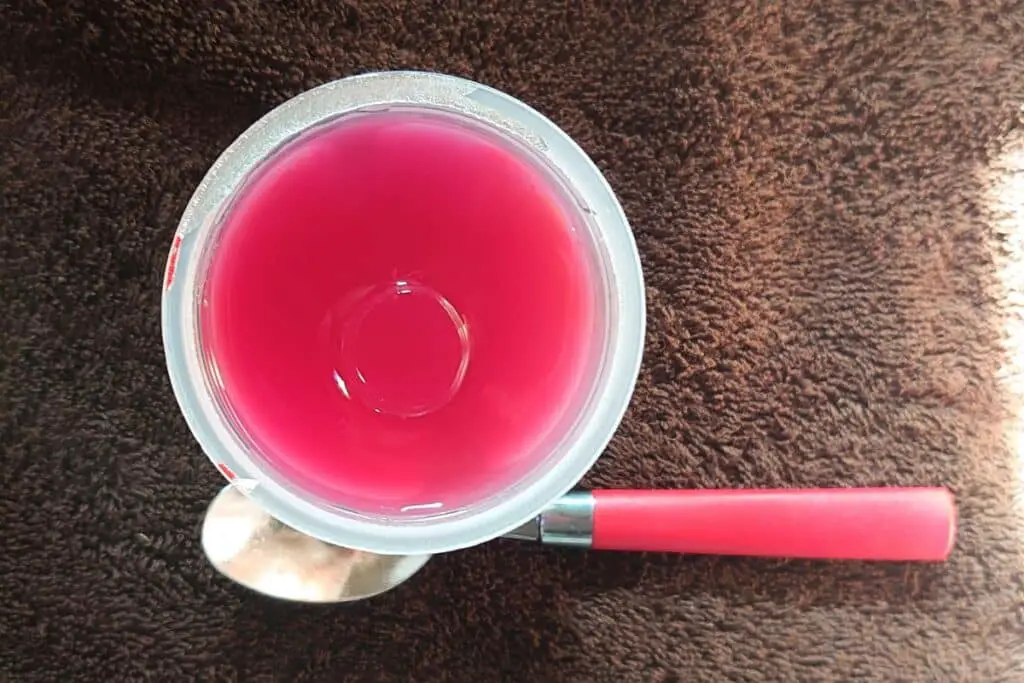In a nutshell: Yes, jelly can go bad. Signs of spoilage include a sour odor, mold growth, or significant discoloration. Proper storage in a cool place, using sealed containers, and maintaining food hygiene can help extend jelly’s shelf life.
There is hardly a more fun dessert than jelly. It moves, wiggles, is translucent, and is super tasty. It is mostly made up of just a few ingredients, and one of them is a type of starch that helps to thicken everything. And a lot of sugar in the original recipe. It’s the sugar, plus the addition of preservatives, that makes jelly a fairly durable, wild little fellow.
All the above ingredients can help the jelly last a long time, even if you do not keep it in the refrigerator. However, modern cuisine prefers to reduce the sugar content as much as possible. Of course, it is much healthier for you. But if you have a fitter version of jelly, pay attention to the method of storage and expiration date.
How Long Does Jelly Last?
How long your jelly will stay good depends on many factors. Primarily about the composition of which it is made. And then on the way you store it. Proper storage will significantly help preserve it and will mean a longer shelf life. Here are the approximate time frames you can count on.
Unopened jelly
If the jelly wasn’t standing in the fridge when you bought it at the store, then you don’t need to refrigerate it at home either. Until you open it, that is. Otherwise, the unopened jars will have a lifespan of six months to one year. But if it has a reduced sugar content, or it is a sugar free jelly, that lifespan could be reduced by a few months. Therefore, pay attention to the recommendations written on the packaging.
Opened jelly
If you do not intend to consume jelly within a few days, it is recommended to put it in the refrigerator after opening. That way, you can be carefree for at least the next few months.
The jelly will be perfectly fine and last until you consume it. If you keep it out of the refrigerator, the duration will not be longer than a maximum of one month. Again, keep in mind that a reduced sugar content also means a fairly reduced endurance. Also, homemade jelly will not endure long as purchased one.
Can Jelly Go Bad?
Unfortunately for all lovers of this delicacy, even commercially produced jelly can be spoiled. Although it looks fun, if you consume spoiled jelly, you could have a not-so-fun rest of the day. Here’s how you’ll most easily notice that the jelly is no longer edible.
Sign 1: It has a sour or off odor
The smell is one of the first indicators that something is wrong with food. When the decay starts, the smell should indicate quite clearly that the processes are happening and send you an alarm to throw the food in the trash. If you smell any weird, maybe a little sour smell, the jelly is spoiled.
Sign 2: Mold is present
Mold is quite possible on jelly, especially if it has stood in the warm. Since it has water in it, it also has the ability to grow mold. If you notice any suspicious organic growth, throw it all in the trash. Don’t even think about just removing the moldy part because the spores have surely affected the whole jelly. You can do nothing about it. Jelly has gone bad.
Sign 3: Discoloration
Minor changes in the color of the jelly are possible without necessarily implying spoilage. But if you notice some more significant oscillations than usual, you can discard everything without a second thought.
What Is The Best Way To Store Jelly?
The way you store jelly will really make a big difference in durability. Aside from recommending keeping it in the fridge if you have room, some other little practices can help.
Tip 1: Keep in a cool place
If you don’t have space in the fridge, you don’t necessarily have to keep jelly jars inside. However, always choose a pleasant cooler temperature in the pantry, and be sure to keep jelly away from any heat sources. For more extended storage, you can freeze jelly. Just don’t freeze it in a glass jelly jar, as it could break.
Tip 2: Seal well
Be sure to always store the jelly on a tray with a cover or in a container. In addition to preventing impurities from contaminating your food, you will also prevent the jelly from absorbing other odors found in the refrigerator or pantry.
Tip 3: Maintain food hygiene
It is important not to allow other foods to contaminate the jelly. Some like to use jellies for dipping, so it is definitely advisable to set aside the portion you need. Always, of course, use a clean spoon.
FAQs
How can you tell if jelly is bad?
You can determine if jelly is bad by examining its color, texture, and smell. If it develops an unusual color, mold growth, off-putting odor, or a change in consistency, it may have spoiled and should be discarded.
Is it okay to eat expired jelly?
Yes, it’s usually okay to eat expired jelly if it looks and smells fine, but always use your discretion and check for signs of spoilage before consuming.
Should you refrigerate jelly?
No, it is not necessary to keep jelly in the refrigerator, but it is definitely recommended. Especially if you want it to last a little longer.
How long can you keep jelly for?
Jelly can be safely stored for an extended period, often up to a year or more, if unopened and kept in a cool, dark place. Once opened, refrigerate it and use it within several months for the best quality.
Conclusion
Jelly is a super fun dessert that can come in a variety of flavors. Without exception, it will always cheer you up the day when you eat prankish slippery jelly.
What’s good is that it is a long-lasting product. It contains sugar and preservatives, so it is quite resistant to time. With a regular sugar scope, it will last up to a year.
However, if you have a slightly healthier version with a reduced sugar range, keep in mind that the shelf life will not be as long as with the usual jelly. Watch out for possible signs of spoilage, and enjoy the jelly until the very last byte.
See more:
*image by Wirestock/depositphotos









